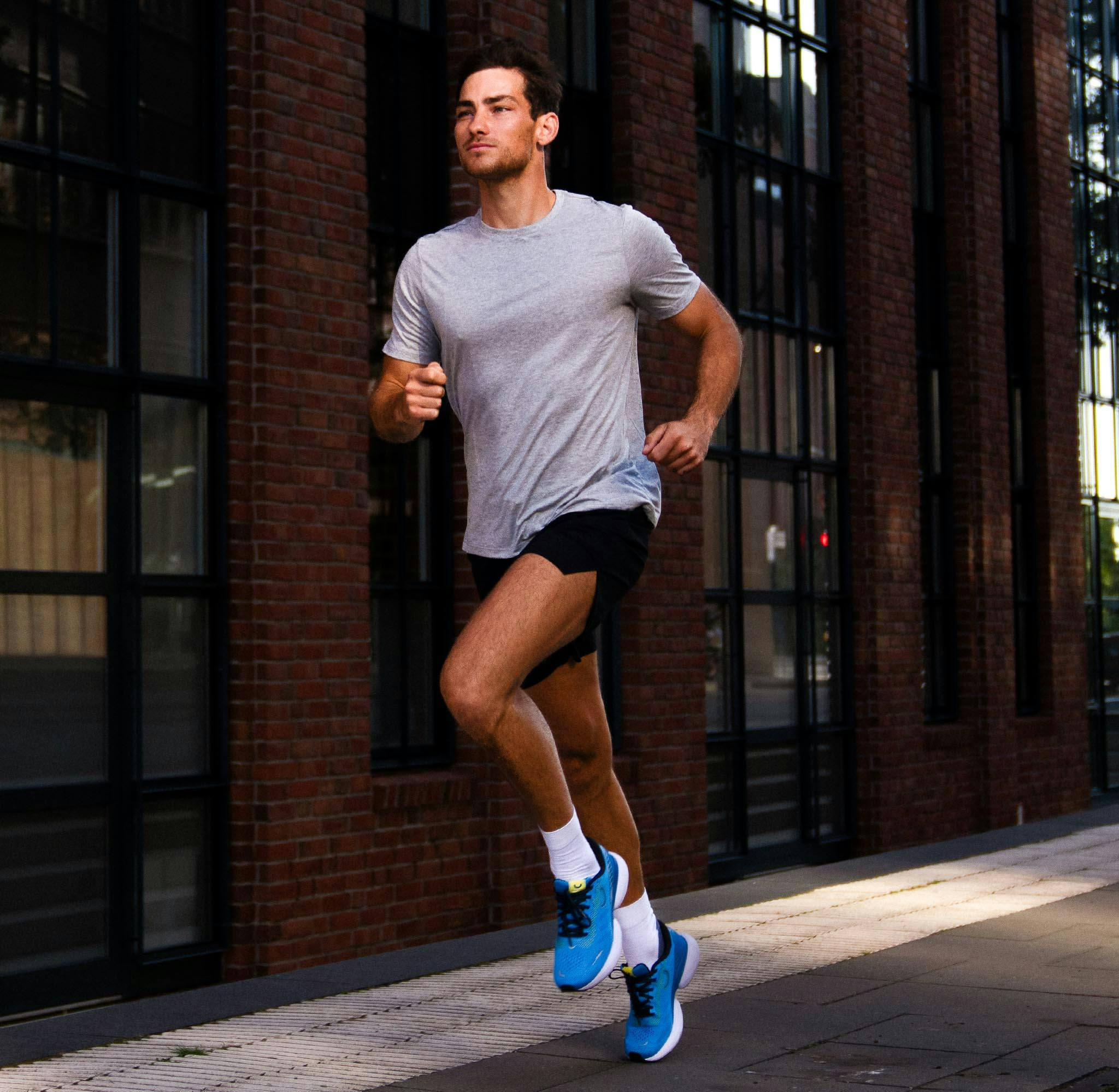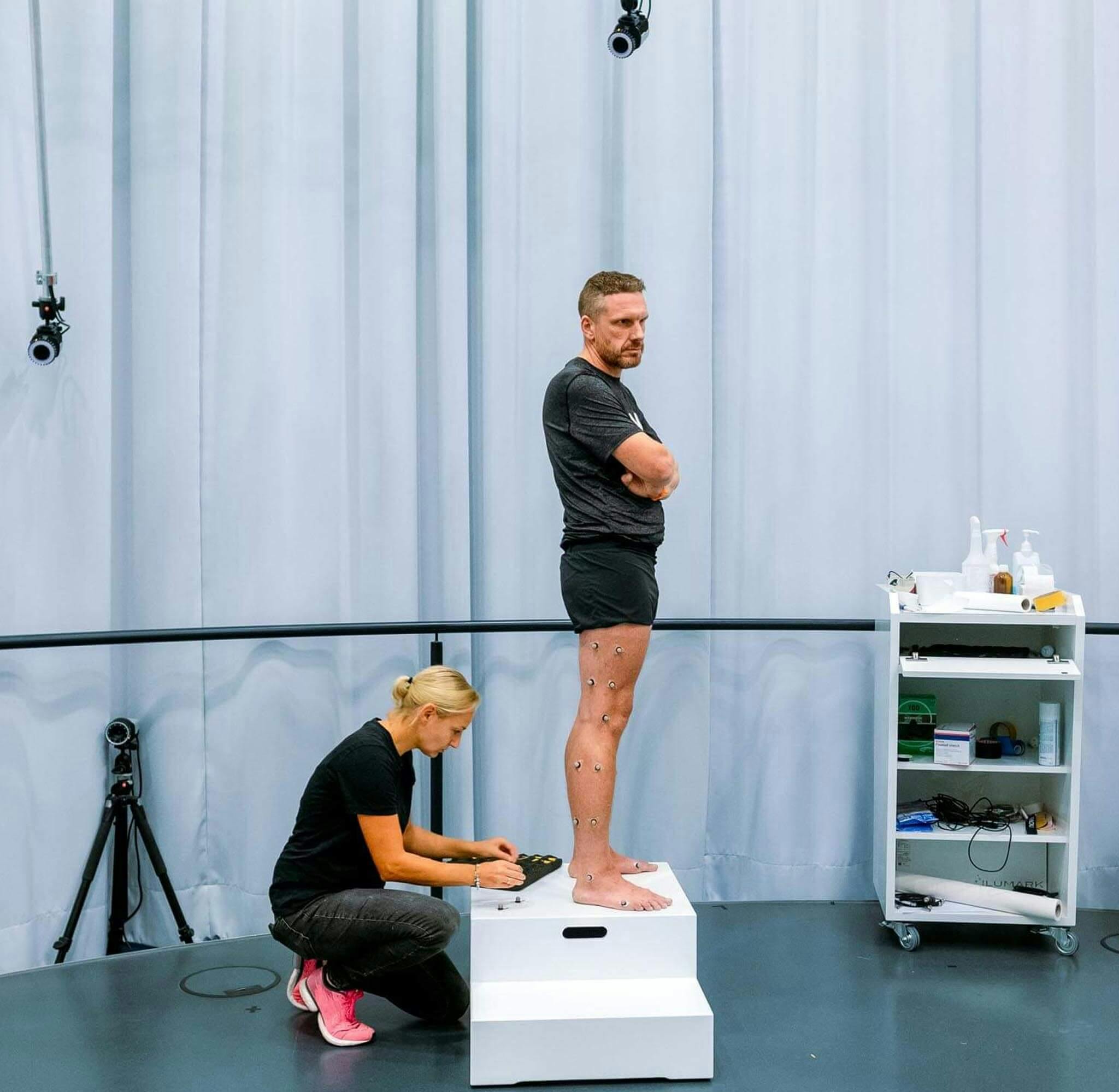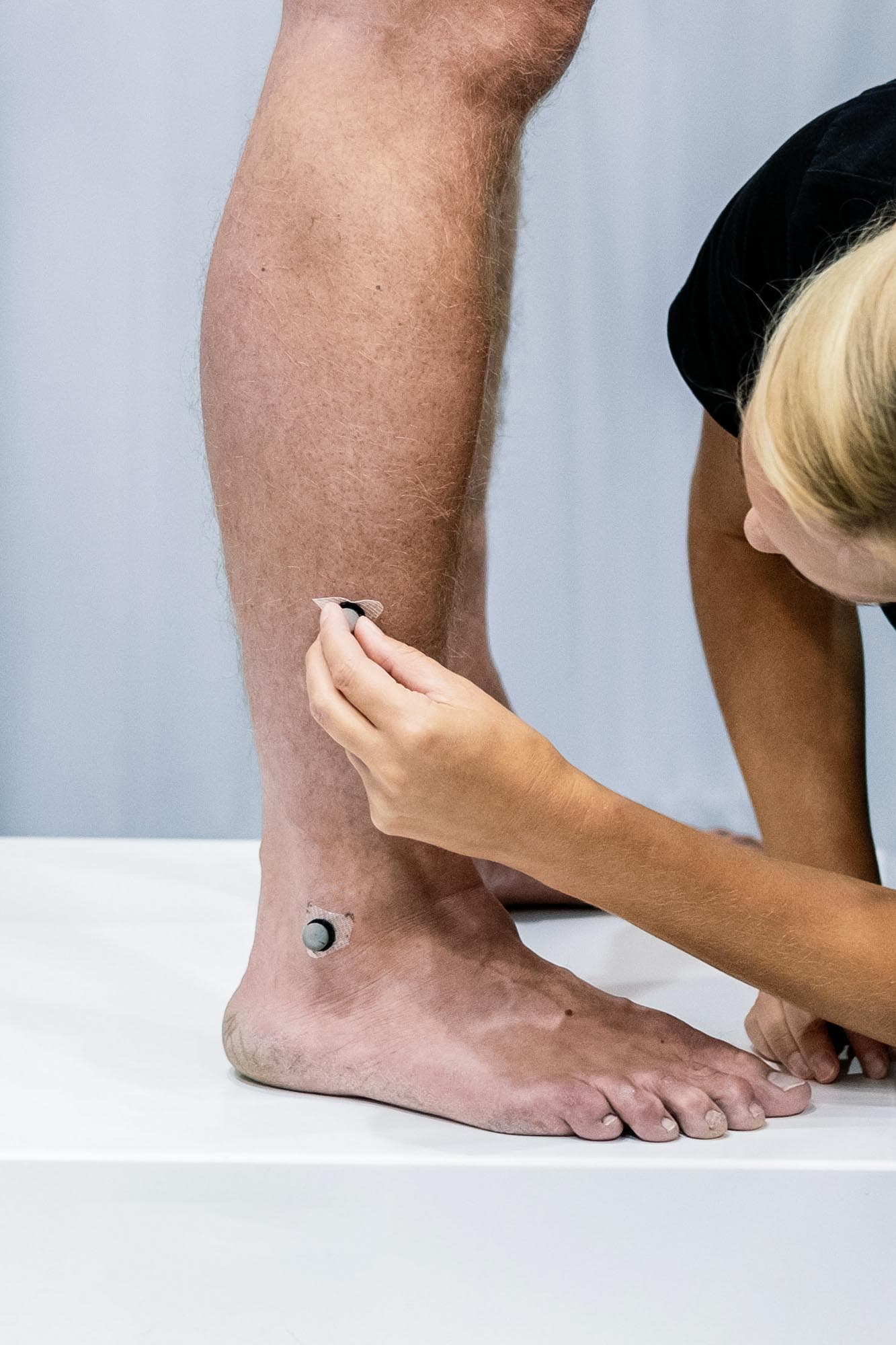
FROM HUNTING AID TO THE MOST IMPORTANT RUNNING TOOL:
WHY WE RUN IN RUNNING SHOES TODAY
Protection from water and dirt, from heat and cold. For more comfort or faster times. From hunting tool to running tool, there are plenty of reasons why we run in shoes today. Together, we look back hundreds of years – to a time when people wearing shoes still looked like beings from the future. A journey through the history of (running) shoes.
Shoes made of grass, raffia, animal fur, or animal skins – Stone Age people were already building their first shoes and shoe-like constructions. Cave drawings show that thousands of years ago people did not always walk barefoot only. Presumably, their main intention was to protect the feet. That is, to be better protected from burning heat or freezing cold and to prevent injuries by sharp stones, splinters, or thorns.
The oldest pair of Stone Age shoes ever found is 9,000 years old; a sandal made of plants, found in North America. So far, researchers have not been able to discover any preserved remains from a time before that. The main reason is that the materials used rot quickly. Scientists nevertheless assume that our ancestors wrapped grass, leaves, and animal skins around their feet even earlier.
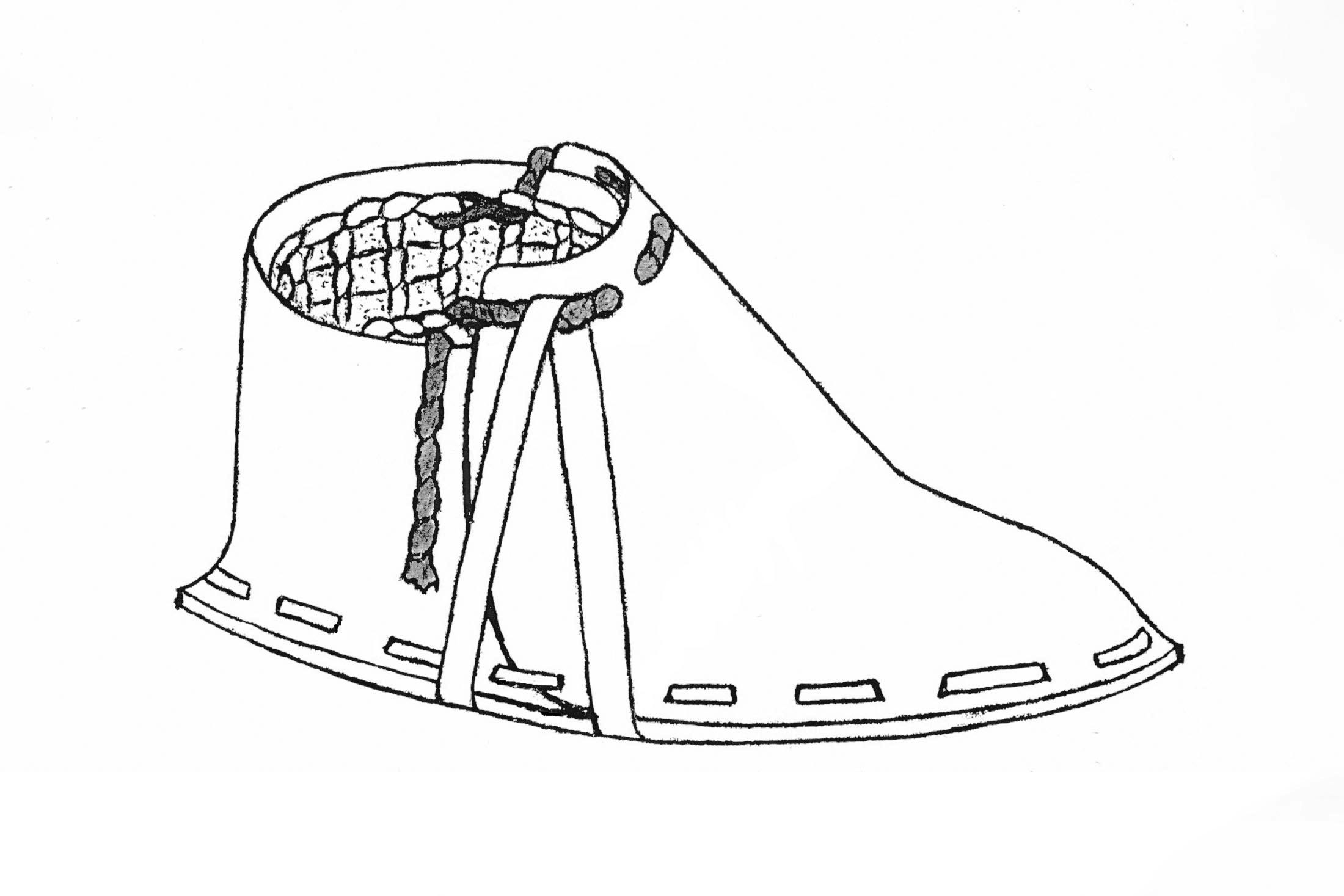
Reconstruction drawing of Ötzi's right shoe. Graphic: Donja Malhotra*
Even then, shoes differed in form and function. When hunting, the hunters of the past tended to wear shoes with thin soles and little weight, in order to be able to chase potential prey for hours. The discovery of the glacier mummy “Ötzi” in 1991 brought to light a creative, cold-insulating shoe construction. According to reconstructions, Ötzi wore a closed, laced shoe made of deerskin and bearskin, which was lined with hay for insulation, to protect him from the cold, ice, and snow when he crossed the Alps around 5,300 years ago.
FROM FUNCTIONAL EVERYDAY HELPER TO FASHIONABLE STATUS SYMBOL
Throughout the ages, the meaning of shoes changed, from sandals in ancient times to crakows in the Middle Ages to classic men’s leather shoes since the beginning of the 19th century.
According to traditions, drawings, statues, and paintings, sandals were the most common footwear in ancient times. Nevertheless, not everyone was allowed to wear them, the social rank decided. In Greece, only free citizens owned shoes; slaves were forbidden to wear them. In the Roman Empire, the sandal was considered not only as an everyday shoe, but also as footwear for the military. The number of leather straps corresponded to the military rank of a soldier. More straps meant a higher rank. And more power.
Shoes as a symbol of status and name – a development that continued in the Middle Ages. Closure types already varied, and a distinction was made between button, lace-up, strap and slip-on shoes. From the 13th century on, the boot became popular. The fashion aspect became increasingly important. Thus, the characteristic crakows of the Middle Ages with pointed shoe tips developed. The longer the toe of the shoe, the higher the social status of the wearer.
The development of shoe construction progressed ever faster in the 19th century. Industrialization significantly advanced the implementation of new ideas combined with new materials. Sewing machines and other technical achievements made mass production of shoes possible for the first time. As a result, the supply increased, and the price fell. Shoes were now no longer individual items. The distinction between left and right shoes also became common. Again.
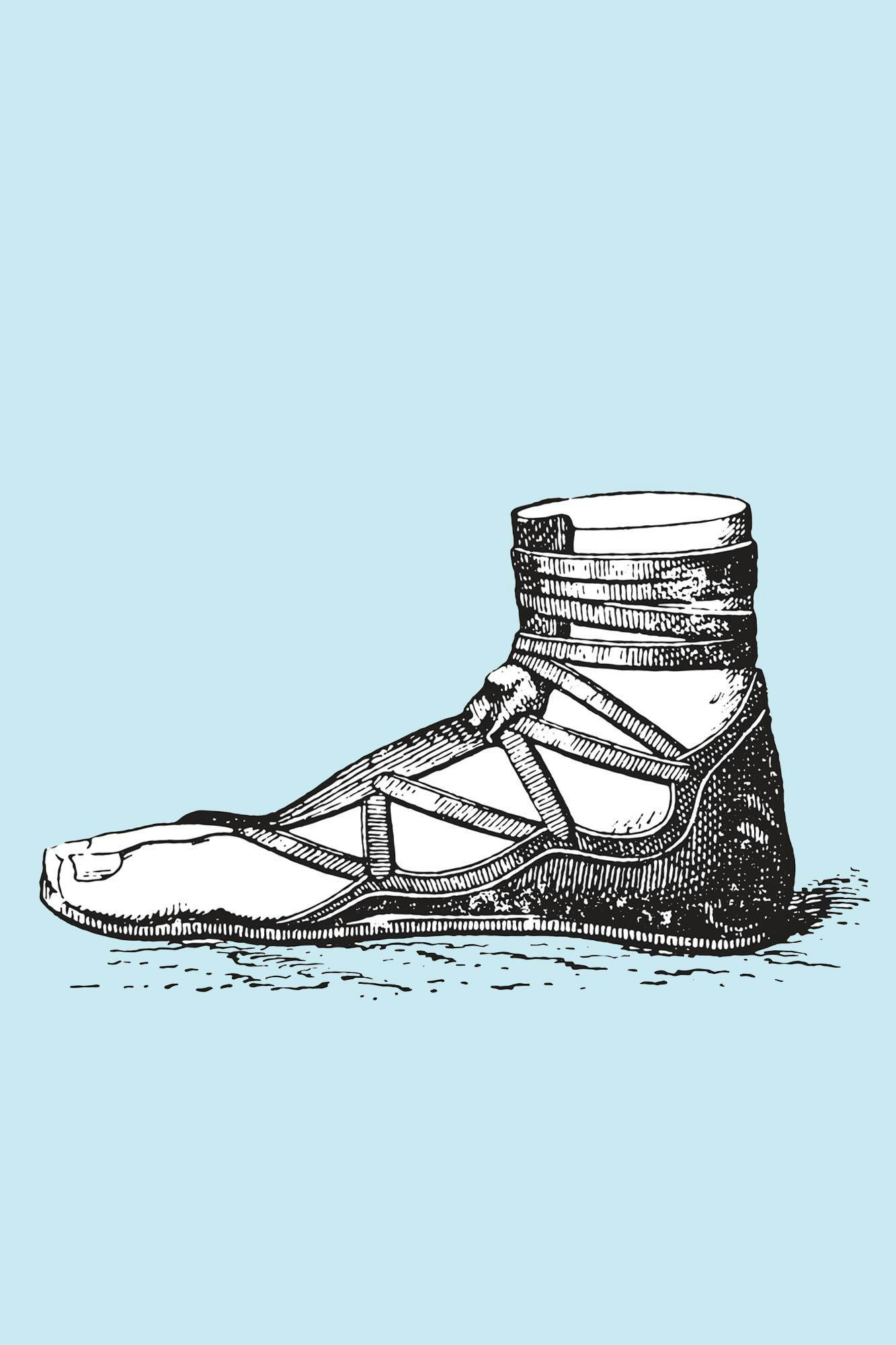
Drawing of a shoe from ancient Greece. Graphic: Morphart Creation / Shutterstock.com
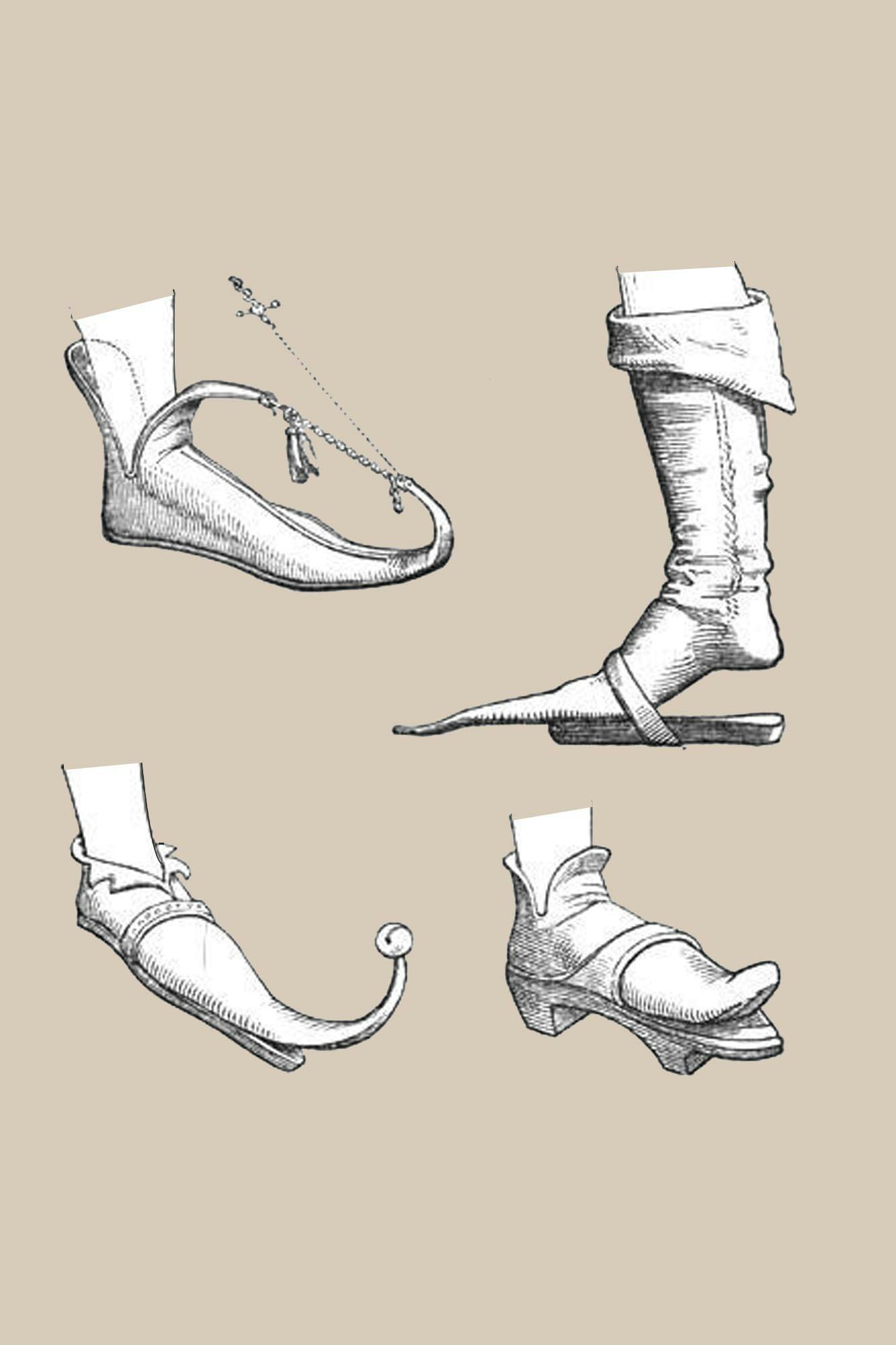
Characteristic crakows of the Middle Ages with pointed shoe tips. Graphic: Royalty free license
PAIRED SHOES – AN INTERRUPTED DEVELOPMENT
Already the Romans paid attention to distinguishing between left and right when manufacturing their shoes. The wearing comfort was supposed to be increased – especially for the soldiers during the days and months of their expeditions of conquest.
In the Middle Ages, when the shoe developed into a status symbol, the functional aspect of shoe manufacturing became less and less important. Instead, it was the appearance that counted, so that from the 15th century on symmetrical shoes were produced. The resulting physical discomfort, such as foot and back pain, was accepted by the wearers for fashion reasons.
It took until the 19th century for the distinction between left and right shoes to become the norm again.
THE BIRTH OF THE RUNNING SHOE
It was not until a century later that the success story of the running shoe began, a story that continues to this day. Today, almost all runners use shoes specially made for running. A hundred years ago, this was still the exception.
Shoe developer Adi Dassler, who later founded Adidas, introduced the first ever running shoe in 1925. A canvas shoe that was specially designed for track and field athletes and that made new best times possible. It was lighter than normal street shoes and had spikes on the sole to ensure better grip.
Until then, athletes ran in normal leather road shoes. This was also the case at the first Olympic marathon of the modern era during the 1896 Olympic Games in Athens. The first city marathon was held in Boston the following year and, despite a small, elite field of only 15 runners, it is considered the forerunner of city marathons held around the world today. However, it would be several decades before these mass events with tens of thousands of enthusiastic recreational runners would be he
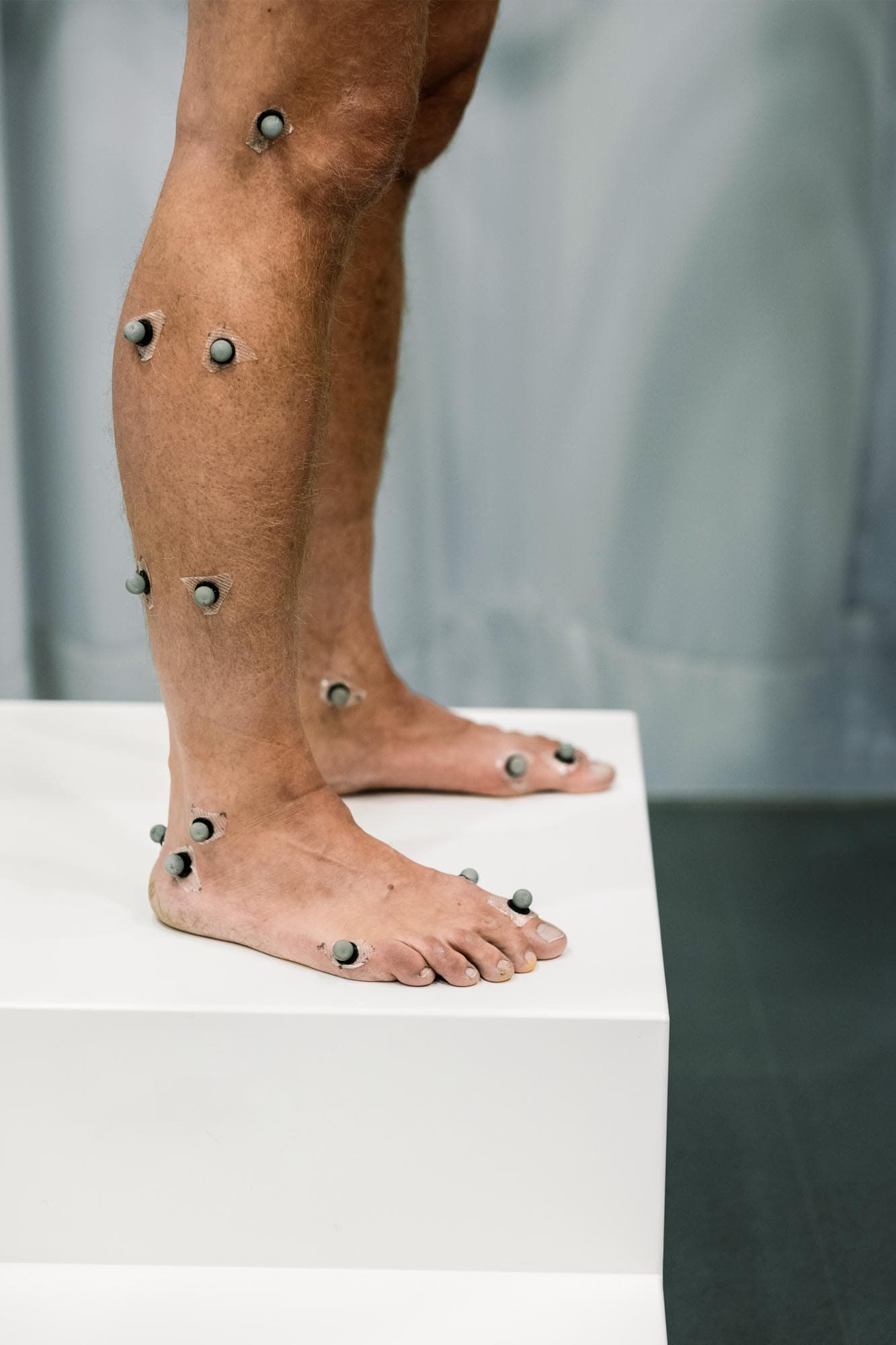
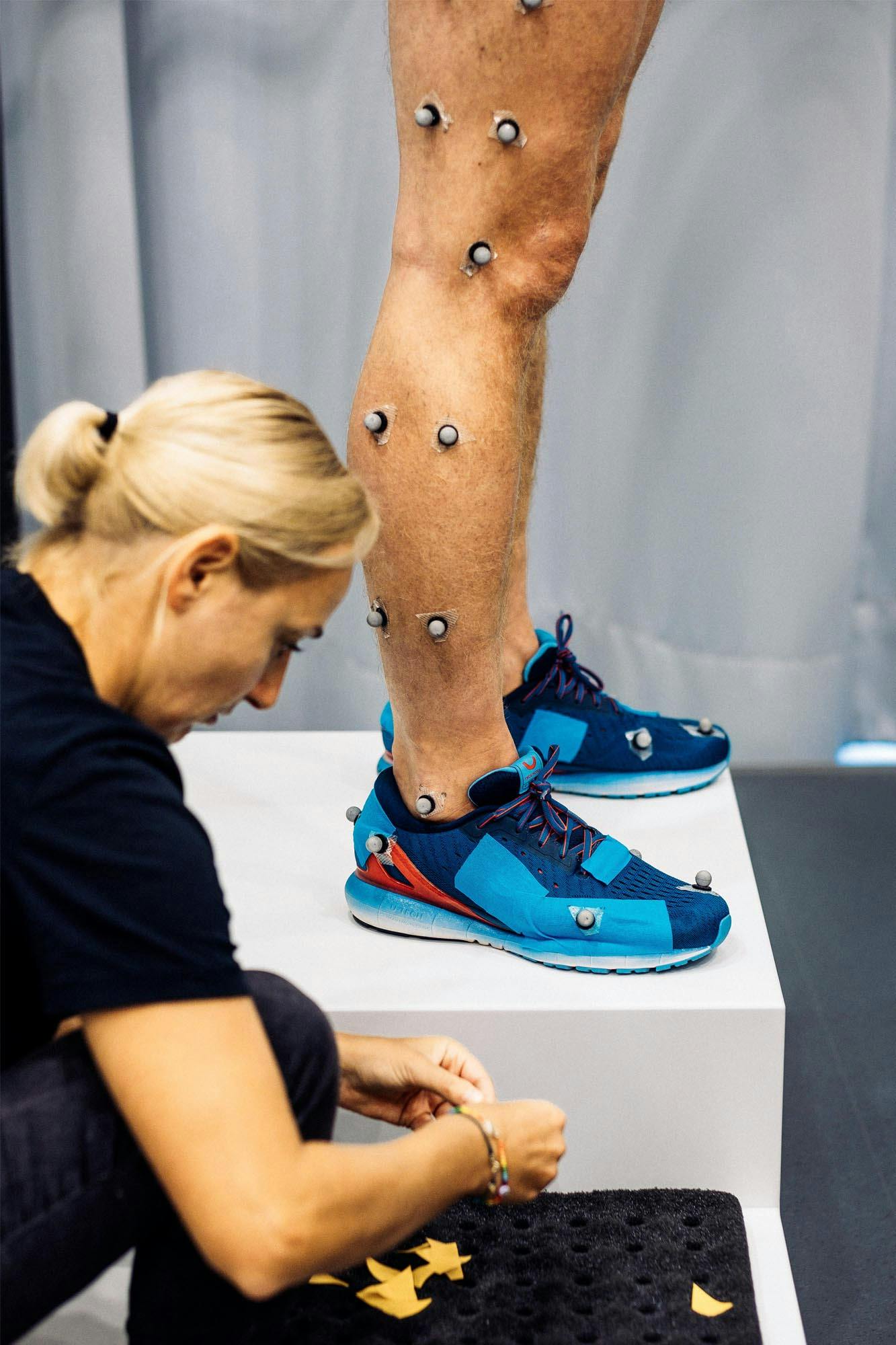
THE RUNNING BOOM – FROM COMPETITIVE TO POPULAR SPORT
In the years following Dassler’s premiere model, running shoe development initially focused on the needs of ambitious competitive runners. The Olympic Games became a showcase for the latest running shoe models. The US American Jesse Owens, for example, wore Adi Dassler shoes at the 1936 Olympic Games in Berlin, won four gold medals, and made his shoe manufacturer world-famous. With the same goal in mind, Japanese shoe developer Kihachiro Onitsuka, founder of Asics, equipped Ethiopian marathon runner Abebe Bikila with his running shoes after his barefoot Olympic victory in 1960. And laid the foundation for the subsequent boom.
In the 1970s, running became increasingly popular among the general population. Starting in the USA, the enthusiasm for running spilled over into Europe. More and more amateur runners started running, albeit in running shoes designed for professional athletes. The first health problems were not long in coming. This was a signal to running shoe manufacturers to take action and improve their products. And the starting signal for the development of running shoes as we know them today.
As a result, different sole technologies developed – some focusing on reducing the impact loads on the body while running, others on increasing comfort. Other ideas were designed to improve performance – or reduce the risk of injury to runners.
In chapter 2 of the Run Better Project, we will explain what’s behind the four sole technologies – Neutral, Support, Rocker, and U-TECH –, why they were developed, and how they differ from each other. The story of the running shoe is not over yet. Our journey continues.
* "Ötzischuh 2.jpg" by Donja Malhotra (originator of the shoe reconstruction and drawing). License: CC BY-SA 2.5.
CHAPTER 2 ________
WHY DIFFERENT MIDSOLE TECHNOLOGIES EXIST
Learn more about the concepts behind the different midsole technologies, why they were developed, how they differ from each other – and which runner's needs they are designed to fulfill. Starting on May 16th.
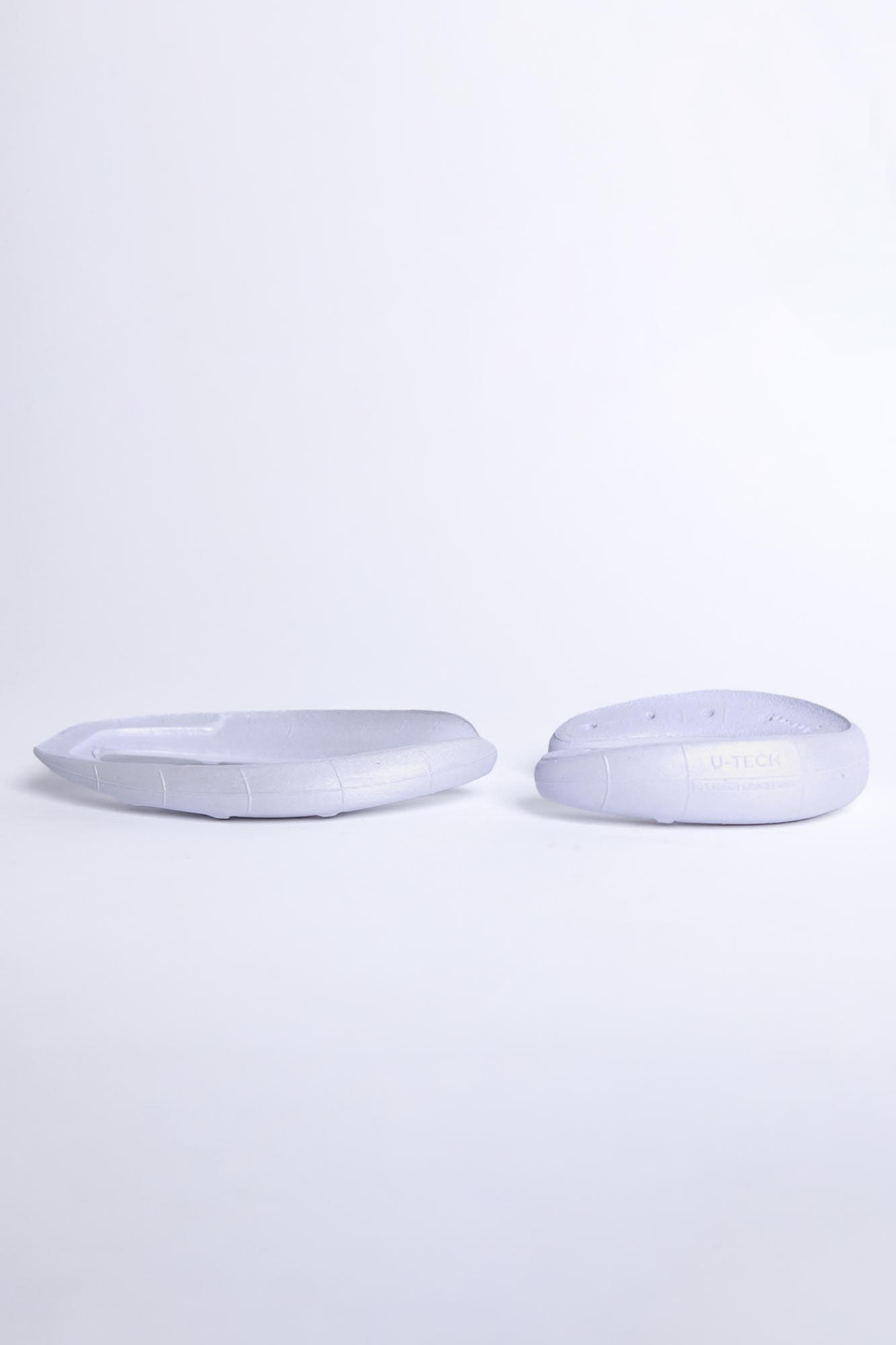

RESEARCH AND DEVELOPMENT:
SCIENTIFICALLY VALIDATED TECHNOLOGIES
Almost 100 % of our technology is derived from scientific findings and biomechanical research. Prof. Dr. Gert-Peter Brüggemann, head of the Institute for Biomechanics and Orthopedics at the German Sports University Cologne for decades, is largely responsible for this. Over the past 25 years, he has been part of numerous innovative running shoe developments – and thus a sought-after expert among the giants of the industry.
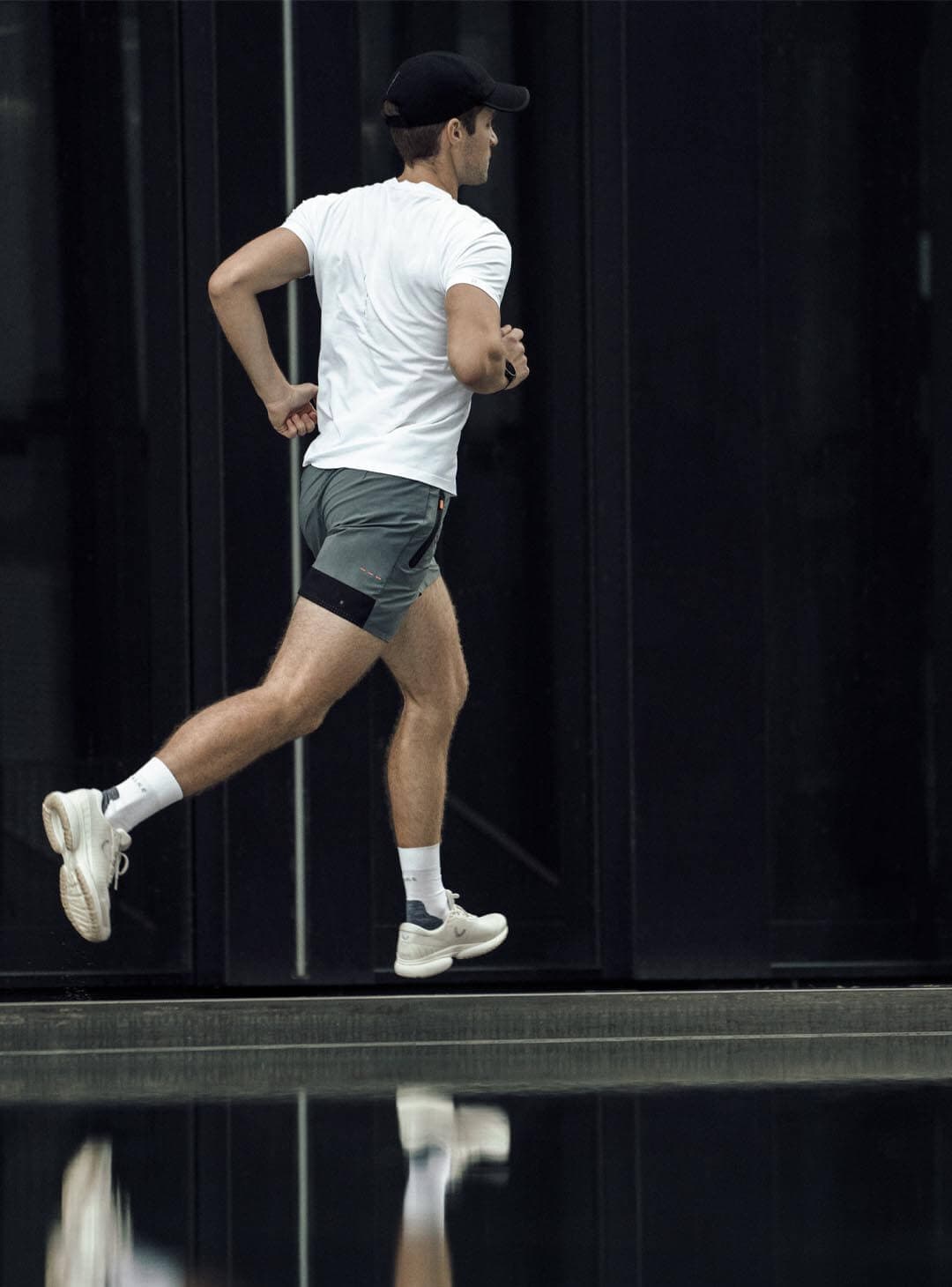

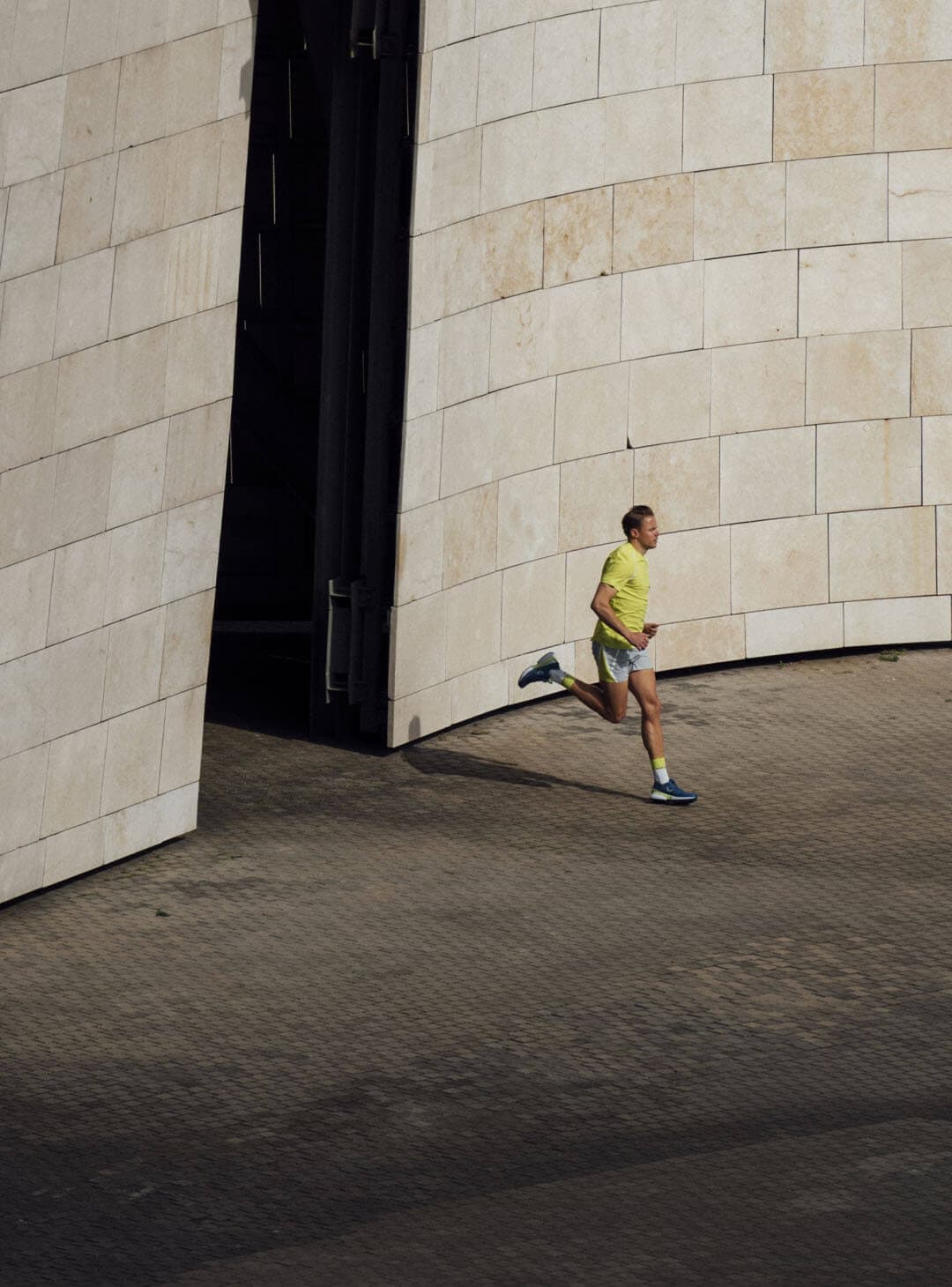

NEVER RUN OUT OF
NEWS
Discover all True Motion stories – and be the first to hear about new products, promotions and events. Simply, center your run!

NEVER RUN OUT OF
NEWS
Discover all True Motion stories – and be the first to hear about new products, promotions and events. Simply, center your run!
RECOMMENDED BY








RECOMMENDED BY








GET 10 % OFF YOUR FIRST ORDER!
Get your personal running updates with exclusive discounts, product news, training plans and tips for healthy running - straight to your inbox. 10% discount on your next order.
SERVICE
ABOUT US
© 2025 True Motion Running GmbH


